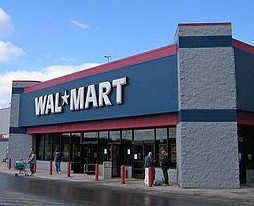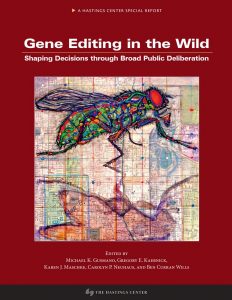
Many of you already have a pretty good idea to what ends Monsanto will go to spread their poisonous genetically modified crops. The company is playing hardball and they plan to win at any cost. Unless we bring them down soon, they’ll pose a larger threat to human life than global warming, world overpopulation and all forms of pollution combined. What Monsanto wants is nothing short of complete control of agribusiness on a global scale, through their patented genetically modified seeds combined with their chemical herbicides and pesticides.
Exactly how far will they go? Ask Percy Schmeiser, he’ll tell you.
There’s a video that’s been making the rounds, David Versus Monsanto, that tells the story of Schmeiser, a 70 year old farmer growing canola, or rapeseed, in Saskatchewan in the Canadian Midwest. In 1997, he found that some of the canola growing on his farm, from seeds he’d been developing for decades, had taken on the properties of Monsanto’s patented Roundup resistant variety of canola due to cross pollination from nearby farms.
Although he wasn’t too happy to find that his seed had been contaminated by Monsanto’s product, he just did like he always did, saving some seed and planting that strain on his farm the following year. This was standard practice, not only for Schmeiser but for many other farmers as well. Putting back seed to plant the following year has been a part of agriculture going back to ancient times. Farmers like Schmeiser didn’t purchase new seed every year, but used their own, often working to develop unique varieties that would produce better yields or a superior product.
Schmeiser barely considered Monsanto’s patents, if he considered them at all. The seeds had come from his plants on his property; plants grown from seeds he’d spent a lifetime developing. Any introduction of Monsanto genes had been accidental and unwanted. He owed them nothing, as far as he was concerned. Indeed, quite the opposite was true, in his estimation, and they were lucky he wasn’t suing them. After all, the contamination by Monsanto’s product had destroyed a lifetime of plant husbandry.
He was soon to learn that the rules have changed, however. Now that we’re letting corporations patent life, it doesn’t matter where the plant grows or where the seed originited. All that matters is who owns the patent or patents on the plant’s genetic structure. If a plant with a Monsanto owned gene shows up on your property, you can’t even touch it. It’s not yours. It belongs to Monsanto, as this video will explain.
This video will take a little over an hour to watch, so wait until you have time to watch it all the way through without being rushed. In the meantime, I’d like to touch on a few issues:
Most warnings about the use of GMO crops concern the health risks taken eating foods made with these crops. Monsanto, as well as a lot of right wing engineering types who like to think of themselves as scientists, disagree with these assertions and claim that genetically engineered plants are absolutely safe to ingest. Indeed, both the U.S. and Canada green-lighted GMO food on the dinner table without adequate testing, on the strength of Monsanto’s claims that their scientists had concluded, from evidence based on studies they’d conducted, that there was essentially no difference between the GMO version of a plant and a plant that’s grown from a non-altered seed.
These promises might be reassuring if they weren’t coming from a company that’s proven itself to be untrustworthy many times over. Since the 1940s, Monsanto’s sworn time and again that products they developed and marketed were safe, starting with the infamous DDT–which nearly wiped out entire species of animals in the span of only a decade. Later, during the Vietnam war years, they developed Agent Orange, a deadly toxin with horrendous health consequences, which was marketed to the U.S. military as an absolutely safe herbicidal defoliant.
In the 1970s and 80s we learned about PCBs, another Monsanto product, a highly toxic class of chemicals used as cooling agents both in home electronics and in the electric utility’s huge power transformers. Monsanto had convinced local governments that these were safe enough to be recycled by spreading them on dirt and gravel roads for dust control–a mess the EPA is still trying to fix. Then there’s Roundup, one of Monsanto’s current signature products, which quickly became a best selling herbicide after the company presented research “proving” the product to be safe enough to drink–which it’s not, don’t try for yourself.
But even if Monsanto were right and GMO foods were safe to feed to our children–that’s only the proverbial tip of the iceberg.
GMO agribusiness is causing some very scary problems on the environmental front. As made clear in the video, in only twenty years, GMO crops have already managed to change the plant life on our planet forever. Already, some of the varieties of foods we ate on a regular basis as recently as 1995 have completely disappeared from the planet. Why? Due to the nature of pollination, GMO plants can’t be contained to one farmer’s fields–that’s why.
Many scientists believe there are no GMO-free varieties of corn or soybeans left in the United States or Canada–including varieties growing in the wild. This becomes especially worrisome when you consider the company’s “terminator technology,” which produces sterile seeds, forcing farmer’s to purchase Monsanto seeds year after year. Terminator crops do pollinate, however, and can turn traditional varieties sterile. I’ll leave it to you to figure-out what that could eventually mean.
At the very least, Monsanto’s practices are not fair to farmers. Certainly, one company should not be allowed to rewrite the manual on how a business that is nearly as old as prostitution conducts business. Relative newcomers like Monsanto should fit into the existing model, no? But the biggest danger may not be to the business model of farming or to the the immediate health issues of those who eat foods made from these crops, but to the continued survival of humankind.
- CES Rolls the Dice and Gambles on Becoming a Superspreader Event - December 31, 2021
- Boston ‘Free Assange’ Rally To Be Held Friday December 31 - December 26, 2021
- Italian Courts Find Open Source Software Terms Enforceable - December 24, 2021



